MedievalReporter.com
Covering history's most marvelous millennium
Join our newsletter!

Covering history's most marvelous millennium
Covering history's most marvelous millennium
Entrepreneurial and opportunistic, the Normans were virtually the template for feudal, high-medieval societies. The fierceness of their heritage made them a veritable warrior culture, but one that nevertheless pursued piety and refinement.
The earliest Normans were, in fact, Vikings. A Viking warband led by the renowned chieftain Rollo (in Scandinavian: Hrolf) besieged Frankish Paris in 909 CE, but he and his men were routed. Two years later, they tried (and failed) again. The Franks pursued them back to the coast; all the while, the retreating Vikings were nevertheless laying waste to the countryside. The Frankish king was mocked for forsaking to protect his vassals from the raiders, but Rollo, too, was criticized for having failed to provide his men with riches and fame.
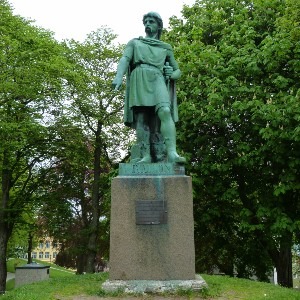
By that point, the king decided on a perhaps brilliant, perhaps dooming idea. Trying to put the raiders’ savagery to his advantage, he concluded a treaty with Rollo. With it, the Frankish monarch created Terra Normanorum, or “Land of the Norsemen”, in the north of this kingdom – the region nowadays known as Normandy. In return for his baptism and conversion to Christianity, Rollo was made an official prince of the Franks. The king also practically promised him independence, as long as Rollo defended the coast from other Vikings.
This pragmatic deal turned out to have far-reaching consequences. Rollo and his descendants embraced the feudal system, replaced their Old Norse language with French, and acquired many French aristocratic customs. Normandy quickly became a
prosperous, and somewhat stable region of continental Europe, making its leaders
powerful magnates. In the late 10th century already, Rollo’s grandson elevated himself to Duke of Normandy. By that time, their intrepid and entrepreneurial Viking heritage had long and successfully blended with the more structuralized political dynamics and models of continental Europe.
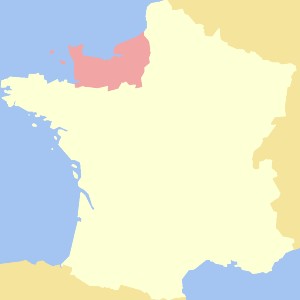
The treaty by which they received Normandy forced Rollo and his followers to convert. Whilst superficially this was a great victory for Christianity, some chroniclers were keen to portray the Normans as wolves in sheep’s clothing. On the other hand, the Normans did commit substantially to financial charity. Realistically speaking, Rollo’s baptism was probably just as pragmatic an arrangement as the rest of the treaty. Illustratively, right before he died he gave a hundred pounds of gold to the Church, but also sacrificed a hundred prisoners to the Viking god Odin.
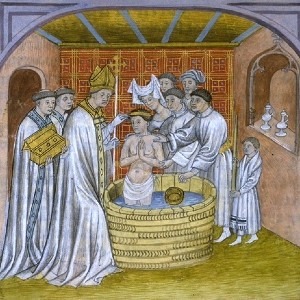
After a couple of generations since their settlement, the Normans were definitely christians through and through. Norman dukes, first in their realm and later in England (which they invaded), were generous patrons of religious art. As such, they were early adopters of a new style of architecture, which came to be called “gothic”. Concerning visual arts, the world-famous Bayeaux Tapestry – an excellent and outrageously expensive example of medieval embroidery – was commissioned by a Norman bishop. Furthermore, when the First Crusade was called, a lot of its knightly participants were Norman.
The wayward urge to travel to new lands seemingly never left the Norman spirit, bringing them into conflict with many non-Catholics, mainly muslims and orthodox christians. The focal point of this confrontation was southern Italy, at the time a frontier region between the Holy Roman Empire, the Byzantines and the Emirate of Sicily. Within a century of them arriving in the south of the Italian peninsula, the emirate had fallen and Normans ruled from Naples to Palermo. They played the geopolitical game so well that, by setting up the pope against the Holy Roman Emperor, they were eventually able to found the cosmopolitan and extremely prosperous Kingdom of Sicily – an achievement of a scale comparable to that other famous Norman conquest, of Anglo-Saxon England.
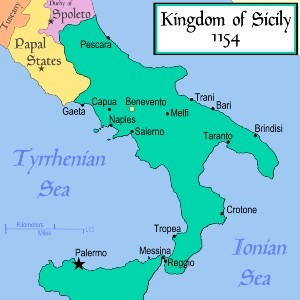
– advertisement –
– article continues below –
The Early Middle Ages were a time of instability and decentralized rule, and few
regions were safe from raiding. Castles became popular across Europe to present the usually nimble attackers with a greater challenge in obtaining quick riches. Normandy, as a maritime border region between the Frankish and Viking worlds, was quite exposed. Therefore the Norman nobility took to castle-building on a grand scale. In time, Norman military architecture, with its keeps and fortresses, became just as widespread as its religious, Gothic counterpart.
Another factor is that castles were an excellent complement to knightly warfare, a mounted style of combat that the Normans swiftly adapted from the French. Heavy cavalry was exceedingly expensive to maintain; the horses themselves were among a knight’s heaviest expenses. Therefore, keeping them safe and well-fed inside protective fortifications was of great concern to the rider. The castle-horseman combination allowed the Normans to hold positions where needed, but also agilely deploy their forces to counter threats – whether they were Viking raiders sailing upstream, or other Normans on the prowl.
They successfully exported this model to England, where the country was soon littered with fortifications so typical that they simply became known as the “Norman keep“. The Tower of London is probably its most famous example. Naturally, the part of France that was under Norman control – which soon outstretched the domains of the French king himself – was littered with these castles as well. But for all their desire for control, the many holdings that the Normans held (Normandy, England, Sicily, Antioch, and so on) caused them to grow apart. Over time, the Normans blended in with the local populations – whether French, Anglo-Saxon, Lombard or Saracen – but not without leaving distinguishing marks upon all of them.
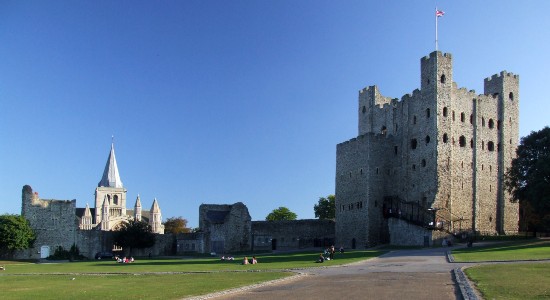
Disclosure: we work hard to provide you with exclusive medieval reports and guides. To make the Middle Ages accessible to everybody, we’d like this information to remain FREE. Therefore, some of the links below are affiliate links, meaning – at no additional cost to you – we will earn a small compensation if you click through.
Grab a short intro on another civilization from our Medieval Guidebook.